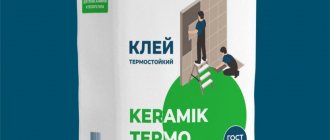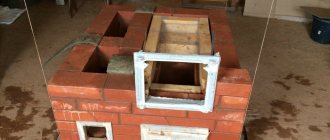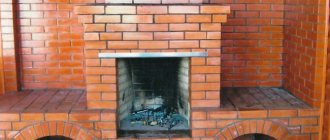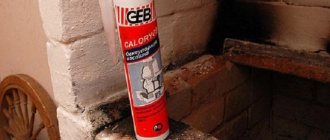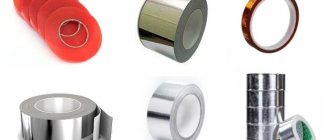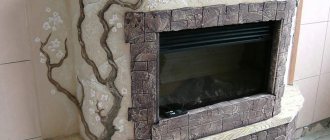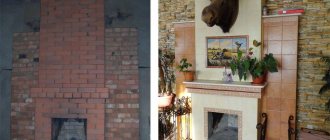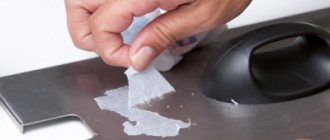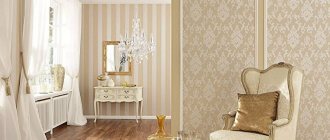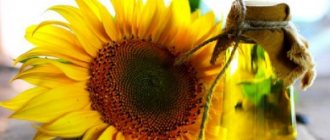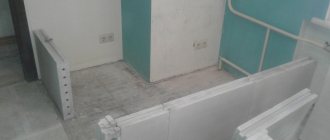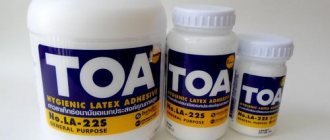Glue characteristics
Today, adhesives differ in purpose and composition . The main types include: thermoplastic, thermosetting, drying and heat-resistant. The latter type is designed for use in conditions of temperature fluctuations. At high and low temperatures the base does not lose its properties. From the above, we can conclude that heat-resistant adhesives have characteristics that allow them to maintain their properties during temperature changes.
Scope of application
The spectrum of action of thermal adhesive is so wide that it can be considered a universal base. It is used when working with plastics, graphite, metal, etc. This adhesive provides a good effect when applied to glass or ceramics. We can say that this type of glue is used in many industries.
Properties of heat-resistant base
Often, both in production and in everyday life, there is a need to mount or connect certain components that operate at elevated temperatures . Of course, it will not be possible to completely do without welding, but it is possible to connect such components to perform work at high temperatures. The temperature range for heat-resistant adhesive is quite wide, which determines the universal properties of such bases.
Types of adhesives
Thermal adhesives have found widespread use in a variety of substrates designed for environments with thermal shocks. Such foundations minimize the harmful effects of external conditions.
Today, the industry produces various types of heat-resistant adhesives . There are natural and synthetic types on sale. The latter contain additional ingredients (plasticizers) to give them heat, moisture and frost resistance. Both the first and second types are used for installation work with fireplaces, tiles, glass and metal elements. The differences between synthetic and natural adhesives lie in the cost and quality of the composition. The glue is available in the form of a solution or mixture.
Review of manufacturers
Formulations from well-known manufacturers are popular:
- Skanmix. The Finnish product is environmentally friendly, has good adhesion, does not shrink or crack.
- Ivsil Termix. The composition with aluminate cement is intended for laying stove walls, heat chambers, and facing with natural and synthetic stones.
- Ceresit Flex CM-16 and CM-17. Common mixtures are waterproof, frost-resistant with good adhesion. They do not deform when covering a heated floor.
- Mixonite Termo. It is a universal product with high elasticity and frost resistance.
- Polimin P-1. Does not withstand strong vibrations, but resists temperature changes.
- Pala TERMO 601 . Heat-resistant adhesive is used when laying tiles, ceramics, and stone.
- Neomid. Universal mastic can be combined with many materials and can withstand up to +1300°C.
- Makroflex. Heat-resistant sealant is not recommended for use on metals and acrylic surfaces.
Russian manufacturers produce high-quality mixtures at an affordable cost: Terracotta Mastic, Profix, Hercules, Pechnik, heat-resistant Moment .
Surface treatment
If we talk about the gluing mechanism itself, it is mainly determined by the composition. Certain compositions are supposed to be applied to the entire surface, others - only by a spot method
Working with metal
When fastening metal elements, several methods are used: gluing, welding or mechanical connection. Gluing requires adherence to a special technique, which consists of a point impact on the target surface. For such work, it is recommended to use heat-resistant glue for metal 300 degrees.
As a rule, to work with metal elements, a special epoxy thermal composition with synthetic plasticizers and additives is used.
High-quality high-temperature metal adhesive can withstand temperatures of about 370 degrees. This determines its widespread use in the installation of heated floors. Hot-melt adhesive is often used in finishing works of saunas, fireplaces, stoves, etc.
Glass bonding
Today people value not only practicality, but also place increased demands on the aesthetic component. This is why, for example, household appliances are often made using various glass elements. Over time, such components may require adjustments. This group includes devices with a high degree of heating .
When operating under elevated temperature conditions, various violations of the integrity of components may occur. Heat-resistant adhesive for glass with organic compounds allows you to easily, quickly and reliably solve such problems without compromising the transparency of the surface.
Oven adhesive
Until recently, clay was the main material for facing hot surfaces. But clay is a rather dirty and labor-intensive material to work with. There are 2 types of adhesives suitable for ovens. These are heat-resistant sealants and adhesives. Both options will allow you to reliably adhere: bricks to each other (hot-melt adhesives) and bricks with different materials (sealants).
Peculiarities
The first and main advantage is that it is a good alternative to welding. At the same time, it provides almost identical grip in terms of strength. If you use a chemical product instead of the usual method, you can save money. No additional equipment is required. But if we compare it in terms of strength, then before welding this indicator is slightly inferior. A specific liquid substance is different from the rest. The surface hardening process occurs only when heated.
The composition is in demand in household and construction chemicals. It is also often used in car repair and plumbing. If you choose the right product, you can combine any products.
Advantages and disadvantages of hot melt adhesive
In addition to basic properties, thermal compositions have the following qualitative characteristics
The advantages of this glue include the following:
- Hot-melt adhesive is characterized by high fracture strength. Manufacturers, as a rule, determine the degree of bonding strength of surfaces at 1.2 MPa.
- Fast setting and drying. Depending on the temperature and air humidity, the average drying time is about half an hour. The glue can be formed and variously manipulated within 10 minutes.
- Hot-melt adhesive provides reliable and durable adhesion of materials for many years without losing its qualities.
- Heat-resistant adhesive does not change its intended properties under the influence of low and high temperatures. It is used for cladding and masonry in the temperature range from 10 degrees below zero to +35. The positive temperature maximum occurs at +750 degrees.
Among the existing shortcomings (which are mostly insignificant) the following can be noted:
- Quite quick connection of heat-resistant adhesive to the material. This requires fast and precise work to connect components.
- Lack of flexibility and shrinkage.
Kinds
The properties of a heat-resistant mixture are determined by their composition. Main types of heat-resistant glue:
- For installation of a heated floor system. Such products can withstand temperatures up to 50 degrees. This type of glue is not suitable for lining stoves and fireplaces.
- For finishing fireplace and stove structures. This type of composition can easily withstand temperatures up to 1200°C.
In addition, heat-resistant mixtures can have different release forms:
- Liquid composition. This hot melt adhesive has a jelly-like structure. Most often, these materials are ready for use immediately after opening the package.
- Powder. Before use, you need to prepare an adhesive solution from the powder. To do this, you should use the instructions that should be on the packaging.
The difference between heat-, fire- and heat-resistant glue
Most often, experts prefer universal types of glue. This allows you to speed up the progress of work and satisfy all the customer’s needs. If we consider each type of glue separately, we can highlight the following features:
- Heat-resistant - able to easily withstand prolonged exposure to temperatures up to 140°C.
- Heat-resistant adhesive - can withstand temperatures up to 1000°C.
- Fireproof mixtures - withstand exposure to open flame for at least 3 hours. Such compositions are highly resistant to chemicals.
Glue for laying the base of the fireplace
Fireplace adhesives may contain cement, clay and sand. They are less elastic than other types, so it is not advisable to use them for cladding purposes.
Under the influence of high temperatures, the shape of substances changes - they expand. When cooled, they narrow again.
If the materials have the same composition, then their contraction/expansion ratio will be similar, which minimizes the risk of cracks.
Fireproof adhesive for fireplace cladding
If the fireplace needs to be finished with stone or tile products, you can use a special glue, which contains predominantly minerals that provide increased adhesion and elasticity.
The use of such mixtures allows us to minimize the risk of tiles (ceramic tiles) falling off during subsequent operation of the stove.
To adjust the surface of fireplace and stove structures, soapstone powder based on liquid glass is often used. Such compositions are called Finnish and have increased heat transfer, so the fireplaces for which it will be used for lining will quickly heat the room.
In addition, Finnish hot-melt adhesive mixtures are extremely plastic when exposed to high temperatures.
Famous hot melt adhesive brands
Today on the shelves of construction stores you can see a wide variety of types and brands of hot-melt adhesive. All manufacturers claim that their products are the best. In order not to get lost in all this, you should figure out which brands of hot melt adhesive are the most popular today .
- D-314. Heat-resistant composition from a Russian manufacturer. Designed for working with ceramics on fireplaces and stoves. The mixture has dimensional stability and elasticity and can withstand temperatures up to +850 degrees.
- "Super fireplace." Heat-resistant composition produced in Russia. Contains reinforcing fibers and is capable of gluing brick and concrete bases exposed to high temperatures.
- "Hercules". An adhesive composition intended for construction work with stoves and fireplaces. Withstands temperatures up to +1200 degrees. It has proven itself well when finishing low-porosity ceramic tiles.
- "The Epoxiline Moment." Heat-resistant adhesive based on epoxy resin. Used for processing glass, metal, ceramic elements. Forms a very durable layer, which can later even be polished or drilled.
What kind of glass are pans made from?
For the production of pans, heat-resistant Pyrex glass is used, which can withstand heating up to 300-400 degrees and slight temperature changes. This cookware is suitable for cooking in the oven, microwave and on stove burners.
The secret of heat resistance is in the chemical composition of the material and its thickness. The more refractory compounds there are, the lower the expansion coefficient. The thicker the glass, the higher its resistance to high temperatures and overall strength.
However, in stores you can buy not only thick, but also thin glass pans. Thin-walled heat-resistant pans can withstand temperatures up to 300 degrees. They are suitable for the stove and oven, but are less durable and require a more careful approach. They also have a lower heat capacity, which is bad for stewing and baking.
Pots made of smoky or brown glass are no different in properties from transparent ones. It's just a matter of taste. Transparent glass is sometimes decorated with designs that are wash and heat resistant. Decor makes the dishes more interesting and beautiful.
Don't look for tempered glass pans on sale - there aren't any. Tempered glass is produced by rapidly heating to 600 degrees and instantly cooling. This material is used in the production of glasses, shot glasses, decanters and other utensils that are not subject to heat treatment. You can put tempered glass salad bowls in the microwave, but not in the oven. Hardening is needed only for greater strength; it does not increase heat resistance.
The most heat-resistant glass, which can withstand temperatures up to 1000 degrees, is not used in the production of pans. This occurs in ovens, fireplaces, stoves. But progress does not stand still. Perhaps soon there will be glassware suitable for use on gas stoves without a divider.
We should also highlight glass ceramics - it is a durable, opaque material with a smooth surface. Glass ceramics are used to make pots, roasting pans, baking dishes and jugs. In appearance, such dishes are similar to earthenware and porcelain tableware, but are suitable for the oven and stovetop.
Safety requirements
When working with heat-resistant adhesives, certain safety precautions . For example, the dry type can have a negative effect on the human respiratory system. Therefore, if necessary, use respirators.
Thus, all the facts indicate that heat-resistant adhesives do not have serious contraindications when working with them. But before starting work, it is necessary to first clearly define an action plan.
Hot-melt adhesives not only have resistance to temperature changes, but are also characterized by water-repellent properties. During operation, no harmful fumes occur. Therefore, for example, high-temperature ceramic adhesive can be used in bathrooms. It should be remembered that only a thoughtful approach to the selection of building materials will help make the right decision that meets all quality and safety requirements.
Criterias of choice
When choosing an adhesive, you must pay attention to the compatibility of the composition with the metal being bonded. The strength of the formed layer should not be less than the strength of the metal itself
Along with the maximum temperature at which a particular composition can be used, the lower permissible thermal limit should also be taken into account. This will prevent the possibility of cracking and deformation of the seam at low temperatures.
When choosing the form of glue release, you need to take into account the place of application and type of work. When gluing microcracks, it is more convenient to use a product with a liquid consistency, and plastic sticks will be indispensable in cases where it is not possible to mix epoxy resins and hardener. The most convenient to use are ready-made semi-liquid mixtures, which do not require independent preparation and are completely ready for use. You should not buy glue for future use: the shelf life of many compounds does not exceed one year.
It should be remembered that even the strongest metal adhesive cannot match the adhesion strength of surfaces with traditional welding. If the structure is subjected to regular dynamic influences, the integrity of the joining seam will be at risk. In such cases, it is better to use welding or mechanical fasteners. If the glued part will be used at home, then there is no need to purchase expensive products with a high thermal threshold, used in the aviation and automotive industries. In this case, you can get by with a budget composition with an upper thermal limit of 120 degrees.
In the next video you will find a review of HOSCH two-component adhesive.
Silicone sealants
Liquid silicone rubbers, commonly known as silicone sealants, are one-component or two-component substances for the most effective protection of seams, cracks and joints.
Compared to other types of sealants, silicone ones have a number of advantages:
- Resistance to moisture, heat, cold (from -50 to +200 °C)
- Good adhesion to various materials
- Resistance to chemical influences (cleaning agents)
- Can be applied to surfaces of any temperature (cold or hot)
- The presence of antifungal additives in the composition
- Elasticity necessary to fix moving elements
- Smooth shiny surface after drying, formation of unnoticeable seams
Depending on the composition and main active ingredients, silicone sealants are divided into acetic (acidic) and neutral. Separately, there are sanitary sealants that are ideal for sealing seams and waterproofing in residential bathrooms, as well as for fixing moving parts in them.
When choosing silicone sealant, you need to pay attention to the following:
- Expiration date: it must be in order, otherwise the quality of the sealant may not be as expected
- Packaging: must not be damaged, as even the slightest crack can cause the sealant to dry out
- Company: you should choose sealants from proven brands with a good reputation.
- Place of purchase: it should be a specialized hardware store, not a stall or market
Expansion tank calculation
First, let's clarify the information a little: open-type expansion tanks (atmospheric) can also be installed on systems with forced circulation, this is the choice of the homeowner
We focused our attention on this, since it is unlikely that it will be possible to make a closed-type membrane tank at home, but an open one is no problem
But first you need to understand what dimensions it will have, and to do this, carry out the appropriate calculation. Without going into the jungle of formulas, we will use the old proven method of determining the capacity of the tank. Knowing that when heated from 20 ºС to 80 ºС, water adds approximately 4-5% in volume, let’s calculate the amount of water in the system. In this case, you should take into account:
- volume of the boiler tank - according to the manufacturer’s technical documentation;
- capacity of radiators - according to the product passport;
- the amount of coolant in the pipes.
Calculating the volume of water in pipes is quite simple. The lengths of all mains and connections are measured, distributed by diameter. Then the cross-sectional area of the pipe of each diameter is calculated and multiplied by its length. All results are added up and the total amount of water is obtained, to which the volume of coolant in the boiler and batteries is added.
Taking 5% of the total quantity and adding another 5% of the reserve, we determine that open-type expansion tanks should accommodate a tenth of what is in the system. Well, knowing the volume, it is not difficult to determine the size of the container.
Vinyl siding colors
To make it easier to choose colors, they were divided into subgroups: shades of white, colored and pastel tones. The latter are the most popular because they are cheaper and do not become boring over time. The low price is due to the small amount of additives needed to maintain color intensity for a long time and prevent it from fading.
White and bright colored panels are most often used to design decorative elements and edgings. They will highlight the main pastel shade.
Basement siding is an exception. Models with imitation brick and natural materials are used here. They can have beige, gray, sand or terracotta shades. It is better to combine them with wall panels of natural colors so that the exterior of the house is logical and complete.
However, sometimes there are original solutions, for example, when the facade is completely covered with siding with imitation brick.
If you decide to purchase a block house, pay attention to natural motifs: pistachio, cream, B and banana. Panels of this color should be combined with the roof of the house - if it is a similar shade, then the building will look faded
How to combine colors correctly
In order not to make a mistake, you need to know the basic laws of color combinations. The win-win options here would be
beige and brown shades,
- sand and plum,
- cream and terracotta,
- pale yellow and burgundy.
If you're feeling confident, you can experiment with bolder combinations like tones of orange, purple and blue. Do not treat these recommendations as an immutable truth - the color scheme should, first of all, please you.
Application
When tiling a stove or fireplace, all work is carried out in several stages:
- Preparatory. The surface is thoroughly cleaned of dirt, dust, paint, and building mixture residues. All holes and irregularities are sealed. Then moisten with plenty of water. The tile is also leveled in size, then moistened with water.
- Fastening the tiles. If a dry mixture is used, it is prepared in advance according to the instructions indicated on the package. However, it should be borne in mind that after about an hour the solution loses its viscosity and becomes unsuitable for use.
- Next, the adhesive composition is applied to the base. The layer thickness can reach up to 10 mm. It all depends on the brand of glue used. Add a small amount so that the substance does not have time to harden. Then they begin laying the tiles in the direction from bottom to top.
Next, the adhesive composition is applied to the base. The layer thickness can reach up to 10 mm. It all depends on the brand of glue used. Add a small amount so that the substance does not have time to harden. Then they begin laying the tiles in the direction from bottom to top.
The tiled surface is immediately leveled, and any remaining adhesive is quickly removed.
Completion of work. About four days after cladding, the joints are grouted. The grout composition must also be heat-resistant.
Safety regulations:
- The composition of heat-resistant adhesive includes various synthetic chemical elements. So, when diluting a solution containing cement, alkali is formed. Contact with skin or mucous membranes can cause serious burn injuries.
- When using a dry mixture, there is an increased content of dust particles, fibers, and grains of chemicals in the air. When interacting with such substances, you must follow the safety rules:
- All work must be carried out using special rubber gloves. To protect the mucous membranes of the eyes, as well as the upper respiratory tract, a respirator and safety glasses are used.
- If a hazardous substance gets on the surface of the skin or mucous membranes, they should be washed with copious amounts of water. If signs of deep damage appear, you should immediately seek help from qualified specialists.
